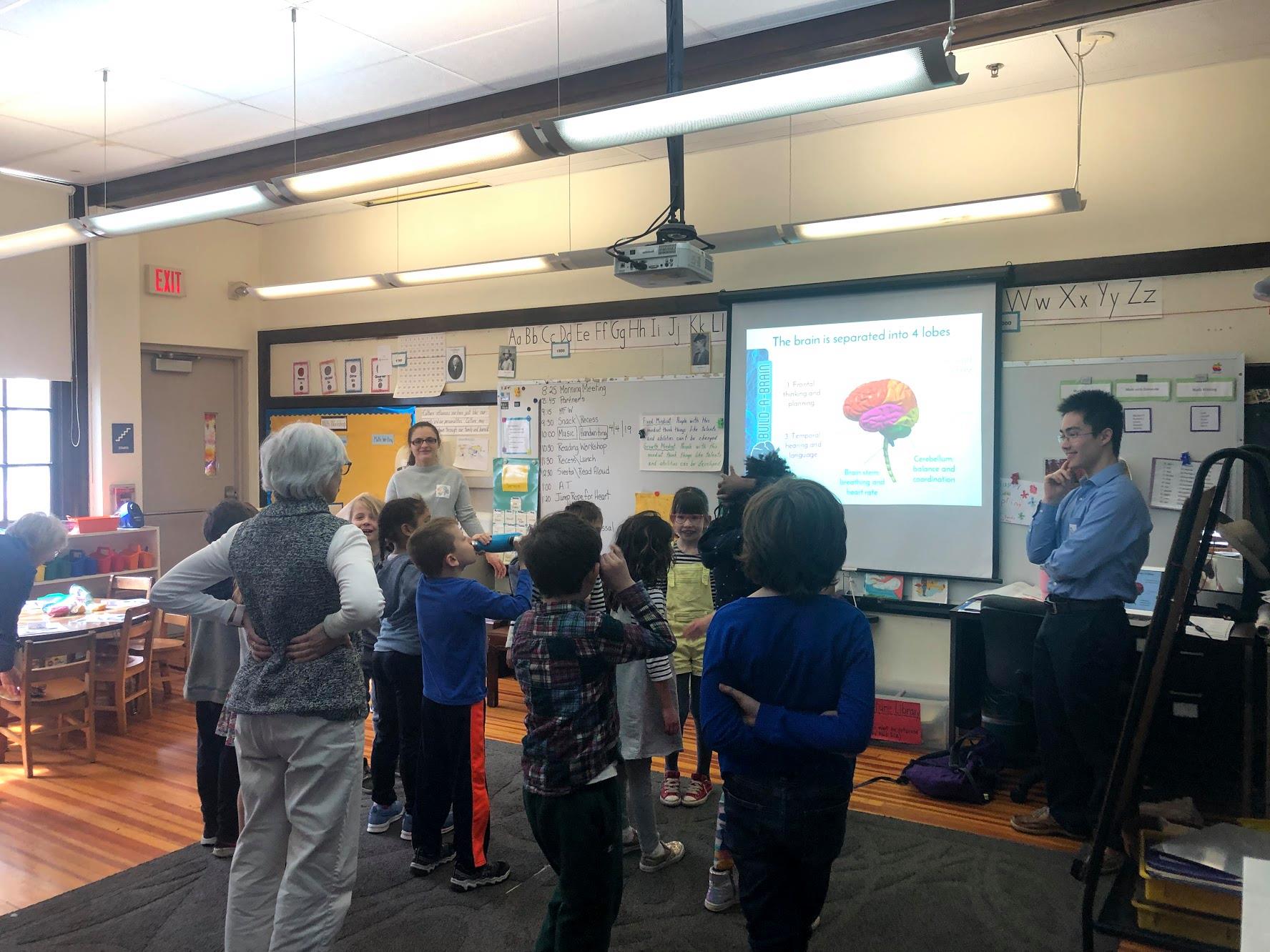By Vanessa Shehu, Staff Editor
In the spring, Bi-Co News writer Vanessa Shehu (BMC ‘22) traveled to Friends School Haverford with the Bi-Co Neuroscience Club. Read about her experience and the club in this feature article:
On April 4th, the Bi-Co Neuroscience Club visited Friends School Haverford (FSH) to celebrate Brain Awareness Week with students and teachers in partnership with the DANA Institute for brain research and public education on neuroscience. Club presidents Claire Indik-Eckstein (BMC ‘20) and Hannah Wild (HC ‘19) created a lesson plan geared to engage the students in learning about the brain in a way that was both entertaining for the children and provoked their critical thinking skills.
Returning for a second year in a row, the Neuroscience Club’s goal has been to spread the importance and fun of science education to students early on in their educational path. Working with young children, ranging from 1st to 6th grade, was a challenge in that we had to extend our knowledge in a simple and clear manner.
Hannah and Claire worked alongside Haverford psychology Professor Laura Been over the course of the year in order to organize the visit and make sure that everything ran smoothly.
Of the event’s success, Claire, an alumna of FSH herself, said, “Hannah and I have had the wonderful opportunity this year to carry on the neuroscience club’s tradition of participating in Brain Awareness Week, a global campaign to increase public awareness of the benefits of brain research lead by the Dana foundation. I was looking forward to coordinating this event not only because of the opportunity for community outreach, but because I am a Friends School Haverford alumna myself. As I went between classrooms, I was greeted by students creating action potentials with their bodies, comparing the cerebellums of different housepets, and rolling play doh into different brain regions. Seeing the students so excitedly engaging with these activities highlighted that there truly isn’t an age minimum for getting excited about the brain.”
Sharing Claire’s sentiments, Kagan Harris (HC ‘21) commented, “I deeply appreciated that the regular teachers were present and also engaged. I’m not the best at interacting with a large group of children at that grade level, so their patience and guidance was crucial. I really enjoyed the presentation component and seeing how engaged, curious, and knowledgeable the students were. I could see them make connections to materials that I’d erroneously assumed might be too difficult to communicate to that age group.”
Like Kagan, with whom I shared the experience of working with the first graders, I too was truly stunned by the passion for learning the children communicated. As I worked with a classroom full of six- and seven-year-olds, I quickly and humorously learned it is more difficult to summarize a difficult topic like neuronal transmission than to relay all the knitty-gritty details!
Nevertheless, I was surprised to learn that my students knew a lot more about the brain than I anticipated, and I recognized an enviable enthusiasm for learning in their rambunctious conversations that is hard to match even in my college seminars!
One activity included the elusive question: “Which animal is smarter, the dog or the cat?” As we taught the class the different lobes of the brain, our goal was for the students to think about the relationship between the size of the brain and the abundance of neurons present, the analogy being that the more neurons and synaptic connections available, the smarter the animal.
My club members and I had to focus on successfully melding the visual and the engaging in order to help the students learn more effectively. Having the class do one-legged stands, for example, helped illustrate the cerebellums function as the control center for balance.
The day ended with a “superpower-brain” building exercise, perhaps my favorite part of the visit. I loved seeing the children get creative and experience the kinesthetic, hands-on fun of science and modeling. Not to mention, as I sat on the rug and listened to the kids explain their rationale for “super-fire snake brains” and “super-ears,” I felt like a child myself for a few minutes. I learned to listen intently to all they had to say, for building up children to use their voices in the classroom prepares them for confidence later on in life. I learned to pay attention to the children who are hesitant to participate and to make sure they feel accepted and included among their peers. as I struggled myself to capture the class’s attention and observed the wonderful teachers at FSH, I realized how challenging it is to be a teacher, primarily because teaching is such an impactful occupation for our youth.
I had a wonderful time working alongside my club members and would encourage Bi-Co students to join in the Fall. In the words of Co-President, Hannah, “the club’s goal is to bring guest speakers and mental health professions and to participate in outreaches like Brain Awareness Week in order to engage Bi-Co students with the study of Neuroscience, field that, despite its enthralling applications, can often be viewed as inaccessible to people who are unfamiliar with the science.” Hannah credits her Haverford professors in the Psychology Department for inspiring her passion for psychology and neuroscience, a field of study that she never expected to pursue. In a twist of fate, Hannah will go on to the National Institute of Health (NIH) after college to research cognitive neuroscience.
On behalf of the Neuroscience Club, I wish Hannah the best with her scientific endeavors after college, and look forward to more Brain Awareness Weeks in the future. May we all strengthen our synaptic junctions and continue to nourish our scientific curiosities!
Photo credit: BiCo Neuroscience Club, Facebook
